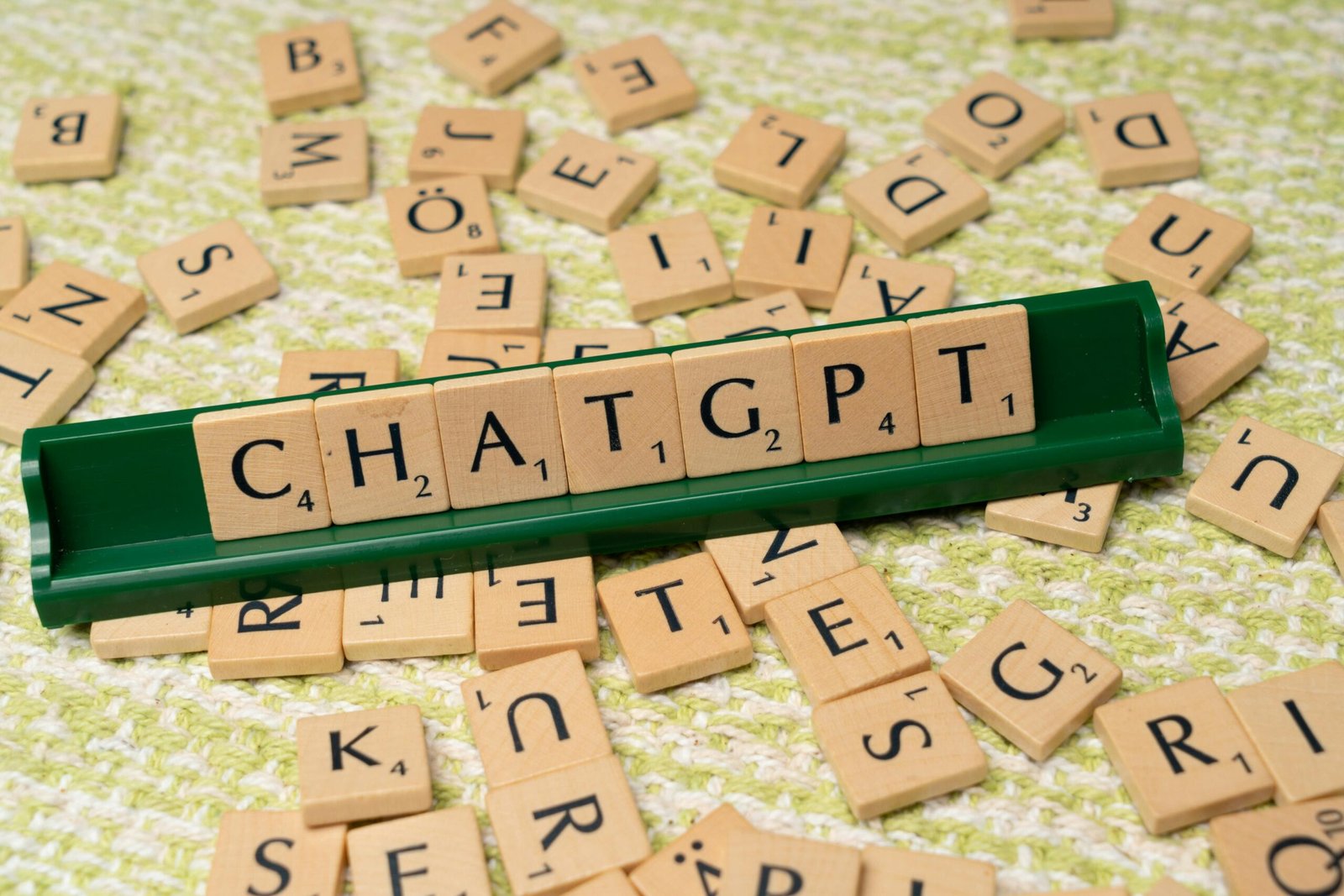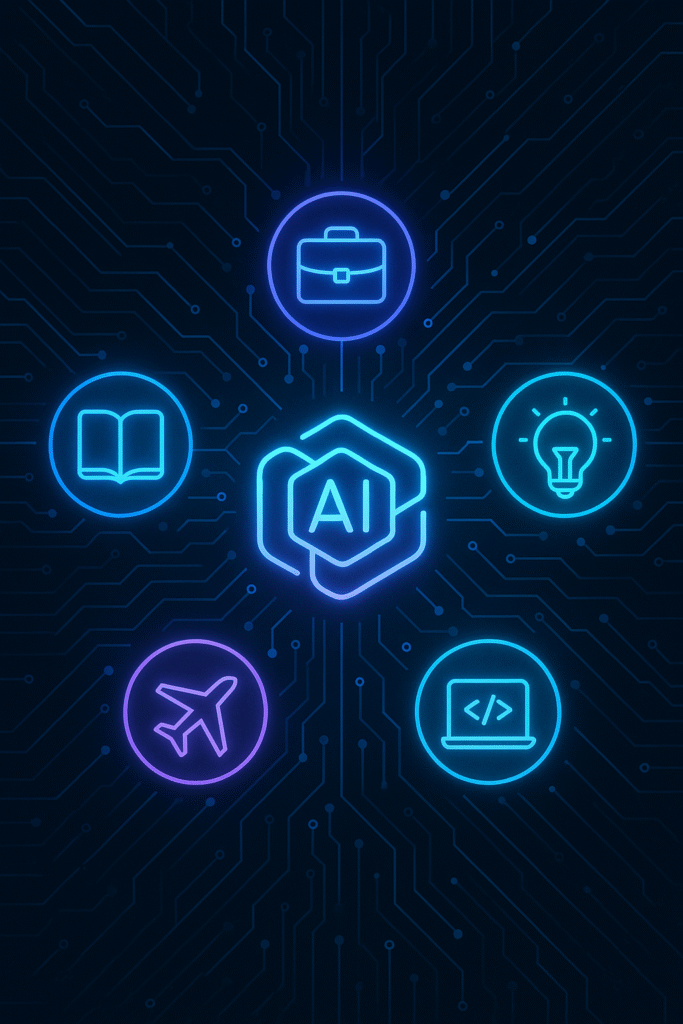ChatGPT is an all-rounder – but with 5 simple building blocks it becomes your personal assistant for everyday life & projects.

Who among you uses ChatGPT?
Who already has their own assistants for various projects — private or professional?
Who feels well picked up and who feels rather overwhelmed by the mass of information or the constant “new”?
I am often surprised: Many do not know the possibilities at all or have not yet tried out how much easier everyday life can become if you build your own AI assistants that are precisely tailored to your own needs. In this article, I take a step back and explain why the topic is relevant, how I personally use ChatGPT — as my all-day work partner with its own “screen” — and why it is worth structuring the AI consciously instead of just asking it sporadically. In the evening, for example, I also switch on my kitchen assistant, who supports me with meals, shopping and planning. But the core remains the same: With clear frameworks, AI becomes a reliable partner — and that is exactly what I want to describe here.
Why We Need to Talk about AI Realistically
AI is everywhere — as a term and as a technology, it encounters us in publications, tools, conferences, in lectures and in the media. The pace is high, new features and updates are constantly coming. At the same time, extremely high expectations are arising: “The AI takes over for me”, “It’s like magic”.
This is exactly where it is worth taking a closer look. Because many headlines, advertising promises and marketing claims are deliberately exaggerated: Companies and individuals who want to generate attention or sales with AI present it as an all-rounder — almost as if it were a magic wand.
Another aspect: the images with which AI is marketed. Robots are often shown that seemingly take over our workplace, walk through the hallways or directly enter the kitchen and household to do everything. They generate attention, but are unrealistic in this form.
Of course, there are impressive developments, such as Elon Musk’s Tesla Bot Gen 3, which is already showing the first steps towards humanoid assistance. And anyone who deals with the topic in more depth also knows about the representation of actual reality and marketing. And yes – I would sometimes wish I already had such a helper at home. But it is still a long way until such technologies are ready for the market, let alone approved in Europe. Security issues also play a crucial role here.
Note: The European regulation of AI and robotics – from the new Machinery Ordinance to product liability for software – is a separate, very extensive topic. In a separate article, I will discuss the framework conditions that the EU is currently setting, which security issues are being discussed and what this means specifically for humanoid systems.
This is what makes the topic of AI so relevant: It is not the technology alone that decides, but how we use it, structure it and integrate it into our everyday lives. This does not make AI any less fascinating — on the contrary: It develops from a supposed “magician” to a real work partner who supports and relieves in clear processes.
In addition, there is another level: limits and areas of application must be defined.
- What about internal data in the professional environment?
- May public documents be processed with AI, even if company-owned chatbots often do not meet the need?
- And what does it mean for private everyday life if AI is used not only for working, but also for organizing, shopping or planning?
These questions are justified and important, but they are complex and go beyond the scope of this article. This is about a concrete solution: how to use ChatGPT assistants to complete tasks in a structured, continuous and high-quality manner.
ChatGPT, Specialized GPTs – and your Own Assistant

ChatGPT is initially a versatile all-rounder. With the current model GPT-5 and GPT-4o, texts, analyses, creative content, research or even code can be created. The AI understands language, text and images in real time and can therefore be used universally.
In addition, there is a large selection of specialized GPTs created by OpenAI and the community. They cover broad categories, for example:
- Learning & Education
- Business & Marketing
- Creativity & Design
- Travel & Leisure
- Programming & Technology
This also brings advantages. A travel GPT, for example, suggests a complete route, including sights and restaurant tips. But: These ready-made GPTs are aimed at many users at the same time and are therefore not exactly tailored to individual processes.
The decisive step comes with your own assistant. Here you decide how he works and which tasks he should take on. A project assistant could, for example, automatically create the weekly status for your team every Monday – according to your template, with the points “Progress, open tasks, risks”. Results are therefore more consistent, comprehensible and exactly as you need them.
The differences at a glance:
- Framework: You determine what it should do – e.g. SEO optimization for blog articles, support with homework or project reports.
- Repeatability: Results always follow the same pattern.
- Focus: It remains limited to your subject area.
- Efficiency: No long prompting – immediately usable.
- Scalability: Once created, you can use it yourself, in a team or privately multiple times.
This turns ChatGPT not only into an all-rounder, but also into a reliable partner that provides targeted support in your everyday life or profession.
The Blueprint: in 5 Steps to your Own Smart Assistant
Your own assistant sounds complex at first, but is surprisingly uncomplicated to implement. It is not about having programming skills, but about storing clear instructions and structures.
The Building Blocks of an Assistant:
- Define task
– Which function should the assistant take on? For example: “Check SEO blog articles”, “Summarize protocols” or “Explain homework”. - Set framework
– What information does he need?
– In what format should the answers appear (structure, length, tonality)? - Define templates
– Each output follows a defined pattern, such as: goal, core result, justification, assumptions, next steps. - Determine thinking depth
– Fast: short, concise answer.
– Carefully: detailed elaboration with justification.
– Deep: Analysis with hypotheses, counter-checking and risk assessment. - Incorporate quality control
– Before output, the assistant checks whether the essential points have been fully taken into account.
The key: These steps give the assistant a clear structure. Implementation takes only a little time – the added value comes from continuous use, adaptation and scaling. On this basis, it delivers results that are consistent, comprehensible and repeatable – regardless of whether you use it privately or professionally.
Conclusion: from Jack-Of-All-Trades to your Reliable Partner
Artificial intelligence has long been more than just a buzzword – it is noticeably changing our everyday lives and our working world. But its added value is not shown in spectacular promises, but in concrete application. Only when we give AI a clear framework does it develop from a general tool to a reliable partner that supports tasks in a structured, reproducible and high-quality manner.
ChatGPT assistants are an example of this: They translate the versatility of AI into clear processes that can be used immediately in everyday life – whether privately, in a team or in a company.
Direct Creation of your Own Assistant
👉 In the next article, I will show step by step how such an assistant is structured – and how it differs from the standard use of ChatGPT.
Example of an Existing Assistant
👉 An example from my work: I have already developed a specialized Kitchen Assistant, which shows how clearly structured processes can make everyday life easier.
Sources & further Information
- Own experiences and application in practice with ChatGPT assistants (2023-2025).
- OpenAI: Information on ChatGPT and GPT-4o/ 5
- OpenAI: Overview of own GPTs & assistants
- Background information on European regulation (outlook on upcoming article):
- EU Machinery Regulation (EU 2023/1230)
- EU AI Act (EU 2024/1689)
- EU Product Liability Directive (EU 2024/2853)
